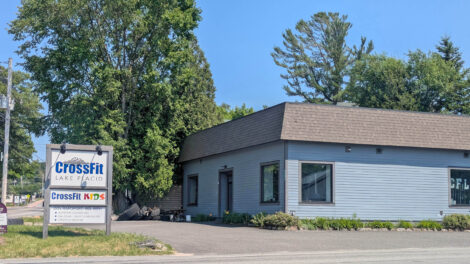COs, Jones oppose Cuomo’s plan to close more prisons

The front gate of the former Camp Gabriels prison is pictured in March 2018 in the town of Brighton. The state closed the minimum-security prison in 2009 and has not yet sold the property. (Provided photo — Bill Chaisson)
Gov. Andrew Cuomo’s budget proposal to close prisons in New York on Tuesday is opposed by corrections officers unions and Assemblyman Billy Jones, a former corrections officer.
Neither Cuomo’s speech nor the budget book went into greater detail than just the general idea of closing prisons.
“His proposal to close more prisons across the state poses a safety threat to the hard-working men and women who work in these facilities,” Jones said. “As a former correction officer, I know the serious impact this could have on the well-being of the employees and will do everything in my power to ensure our North Country prisons are not affected by this.”
The New York State Correctional Officers & Police Benevolent Association took issue with the proposal, saying it “fails to address the realities of the prison system which he (Cuomo) oversees.”
A release from NYSCOPBA said consolidation has led to overcrowding and increased violence.
“At a time when prison violence is at an all-time high, the Governor and the Legislature should be working with us and our members to find solutions to make our prisons safer,” NYSCOPBA President Michael Powers said. “The last thing we need is incarcerated individuals tightly crammed into prisons, creating nothing more than a powder keg of violence.”
According to the NYSCOPBA release, in the past 20 years, New York prisons have had a 39% reduction in inmate population and that in 2019, “the incidents of inmate-on-inmate and inmate-on-staff assaults were the highest ever reported by the New York State Department of Corrections and Community Supervision.”
The budget booklet put that reduction at 38%.
Fifteen prisons have closed under Cuomo’s administration, the release says.
NYSCOPBA has called for the state to remove double-bunks from prisons to spread the inmate population out and return to the intended ratios from when the facilities were constructed.
“The practice of double-bunking was adopted out of necessity when there was not enough space to house all of New York inmates,” the release says.




